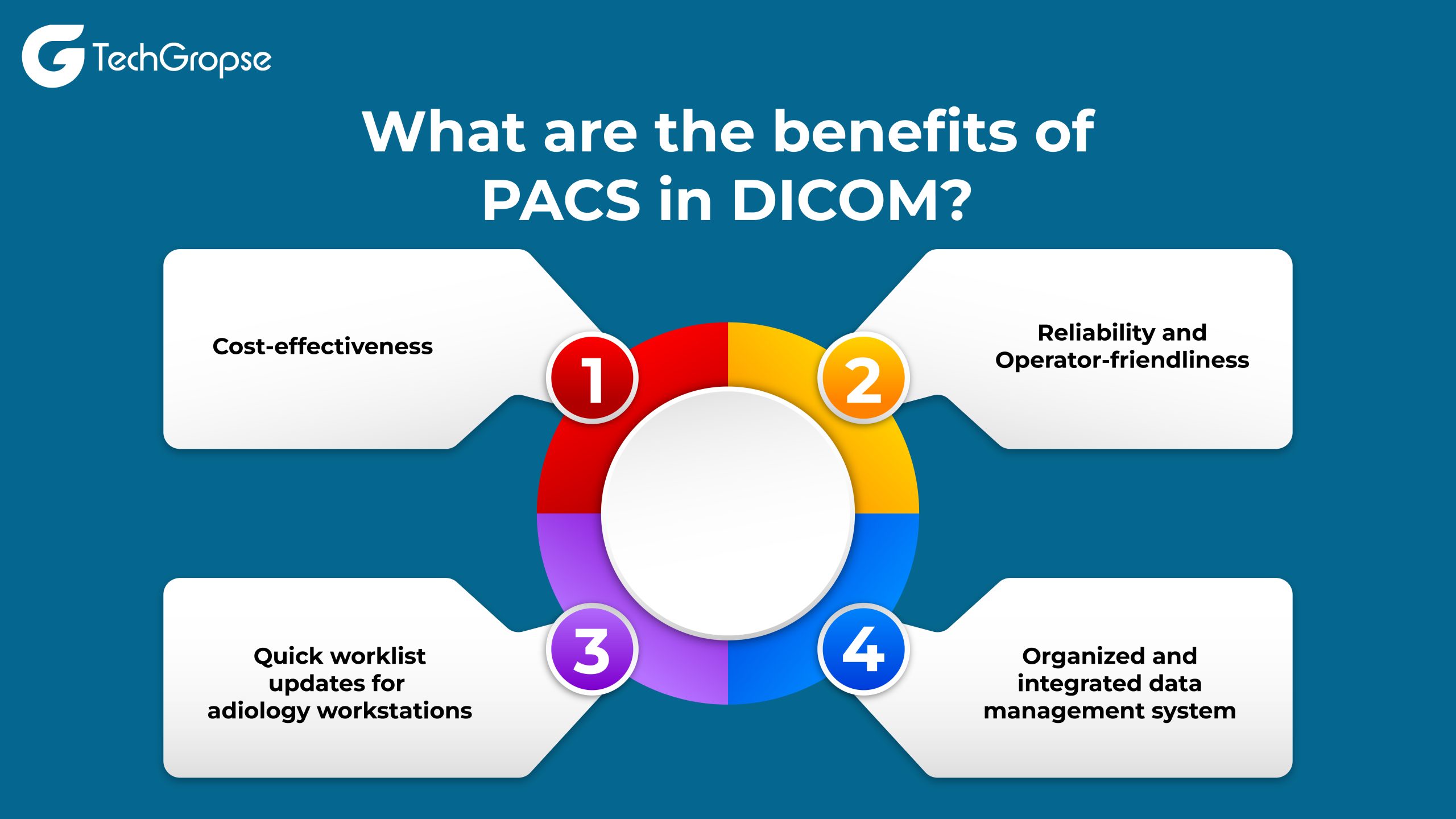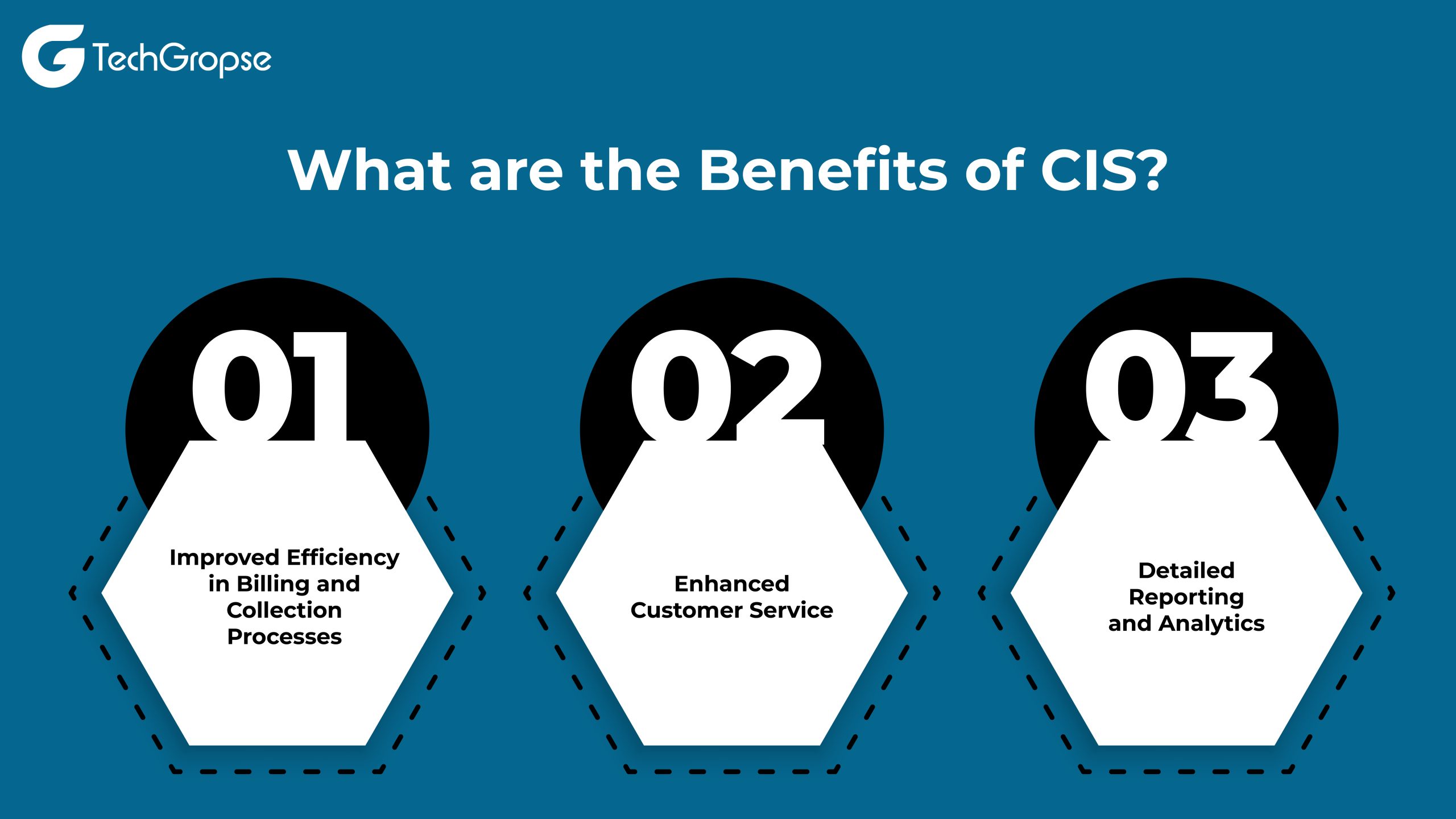DICOM which stands for Digital Imaging and Communications in Medicine Standard, is a set of rules and guidelines for storing, transmitting, and displaying medical images. PACS, RIS, and CIS are all systems that use Digital Imaging and Communications in Medicine standards to store and manage medical images. Here’s a quick rundown of all of these terminologies so you can get an idea.
This blog is completely informative as it will help you understand some important terminologies. So, what are you waiting for? Let’s get started… Firstly, we understand PASC, it how one can deal with it, and later on, we will see the difference between all of them.
What is PACS?
Now after reading the heading, you must be thinking about What Does PACS Stand For In Radiology well, PACS Medical Abbreviation is Picture Archiving and Communication System, it is a medical imaging technology that is currently in demand. Now you must wonder how this technology is ruling the market because this technology allows the remote retrieval of medical images and associated data. This simply means that you can retrieve your old medical images to analyze them or for some other purpose. This PACS technology has the ability to combine both hardware and software to obtain, store, and retrieve medical images. Moreover, this technology will use the Digital Imaging and Communications in Medicine (DICOM) standard for retrieving the images.
In addition to that, PACS supports all image types and it also saves hospitals from storing images in physical film archives, therefore a huge hospital can take care of a huge number of people at a time without thinking about the image data storage. Hence, most hospitals not only in India but also in other countries are utilizing technology in their hospitals and managing their image data seamlessly. Another reason for choosing this technology is that it is cost-effective as hospital images are not normal images they have to be in a high-quality manner so that doctors can understand the disease properly, and other related things.
So, hospitals cannot take any chance with the quality of hospital images, and this leads to the most costly as preserving them or storing them is way more difficult than you thought. To store the big data they need a big source and a big source means a big cost but with the help of PACS technology, you can save the images into the technology and can easily retrieve them anytime you want. Moreover, this also doesn’t harm the quality of the images so, doctors and other concerned persons can easily trust this technique. So, this is all about Radiology Information Systems And PACS now we will move forward to what are the uses of PACS in DICOM.
Related Blog : Top Healthcare Software to Grow Your Medical Business
Uses of PACS in DICOM
As we have discussed we are going to talk about the uses of PACS in this section, so let us tell you that PACS is used to store, retrieve, present, and share images produced by various medical hardware modalities that we have discussed already. Let’s take some examples to understand it better, X-ray machines, computed tomography (CT) scans, magnetic resonance imaging (MRI) scans, and ultrasound machines.
So these are the best examples to understand radiology information systems and PACS altogether. In addition to that, now must be thinking of where and in which form these images are getting saved. If you know it’s good for you and if you are new to it then don’t worry we are here to explain to you the new and latest technologies. Well, you need not be worried about your photographs as these images are getting saved online with the help of cloud storage, and for offline mode these images are getting saved on-premises.
Now if we particularly talk about any field in which PACS is used continuously and in a huge manner then PACS is predominantly used by radiologists. This is because radiology is traditionally the most prolific producer of X-ray images that need to be stored, retrieved, and transmitted for future use. Today PACS technologies have also been incorporated into other departments of medicine and the healthcare industry.
What are the benefits of PACS in DICOM?

There are multiple advantages of PACS in DICOM some major of which are given below, please have a look at them and decide which technology is the latest one or the traditional one.
Cost-effectiveness
PACS in radiology has the ability to drive cost-efficient operations and this is one of the biggest advantages of PACS in DICOM. If we talk about the traditional method of radiology then it was not cost-effective due to some factors that affect the cost. Those factors are, repeat films, lost films, artifact-related errors, printer upkeep, and operator errors. However, with the adoption of PACS, this adoption will help you greatly minimize the cost. In addition to that, it also leads you to more streamlined radiology departments. This not only results in significant cost savings but also reduces the environmental impact.
Reliability and Operator-friendliness
The other advantage of PACS in DICOM is that it is reliable for the audience out there and it is also operator-friendly. Operator-friendly means operators can easily operate this new system and they can also make the best out of it by getting the best medical images of patients. In addition to that, the implementation of PACS also provides us filmless environment when compared to the laborious and time-consuming processes. Moreover, PACS also includes new imaging technologies, such as OmegaAI – the world’s first imaging EMR, that helps in going beyond PACS and has revolutionized the healthcare industry.
Quick worklist updates for radiology workstations
The third and most attractive advantage of PACS in radiology is that it streamlines patient list updates for examinations. This list helps doctors or examiners to examine each and every patient without missing out on their important details. Moreover, when a physician demands an exam, the system automatically inputs the details into the radiology department’s worklist. Ultimately, it helps them to stay updated about each and every patient. In addition to that, this also eliminates the extra effort of doing manual data entry and also reduces errors, and saves you time for other important tasks.
Organized and integrated data management system
PACS helps you in organizing and integrating your medical data will all security. It serves as a unified platform for storing, organizing, and retrieving a huge amount of medical imaging data that you can easily avail in the future at any time you want, you need not worry about the oldest data as you can also retrieve it. In addition to that, it also enables a coherent management system and cataloging of images in an organized and easily searchable manner. Moreover, if you integrate PACS with other systems like Electronic Health Records (EHRs) and Radiology Information Systems (RIS), it ensures seamless access to comprehensive patient data.
So, these are the major advantages of PACS in radiology. Now, you will notice one common thing that is whenever you search for Picture Archiving and Communication System you will definitely come across some abbreviated words like RIS and CIS. so, in our next section we will discuss them one-by-one and at the end we will also see what are the major differences between these three of them. Here in the upcoming section, we will learn about “What Is RIS”. but remember to get all these amazing features and applications you will need a good Software Development Company who can build you what you want.
What is RIS?
RIS System stands for Radiology Information System and is a type of radiology software solution that helps in storing and managing medical imaging data. It is similar to HIS system hospital information system (HIS) but it doesn’t replicate it. As this has the ability to automate data management but is adapted specifically for radiology departments. In addition to that, it also helps in optimizing the imaging process by integrating the multiple functions included in managing patient information into one comprehensive system.
Now you must be wondering about RIS and PACS so, now we will see how RIS PACS are two different terms and how the concept of these two. First, RIS is a term often used with other terms such as Picture Archiving and Communications System to describe a type of medical IT system used within radiology. But as it is applied within the same field as PACS that’s why people sometimes get confused about both of them. What is RIS exactly if we understand it deeply and what differentiates it from PACS? Well, RIS improves workflow and streamlines processes, systems such as PACS provide storage and a long-term option for the management of patient information.
Primary functionalities of RIS
- Scheduling: RIS helps you automate everything, you don’t need to worry about rescheduling time, or another booking, etc RIS will do it for you, and this system will also remind you and your customers about the next tasks. In addition to that, it will also track all your appointments. And the best part about this system is that it optimizes the use of resources such as radiology equipment and personnel.
- Patient Tracking: Patient tracking is the most important thing and this is also a most hectic task to perform as each and every time you have to keep your keen eye on the patient so that you don’t miss anything important. Now no longer hectic with RIS as this helps me monitor patients’ entire journey within the radiology department, capturing all interactions, procedures, and statuses.
- Registration: RIS also helps in managing the initial entry of patient data into the system, including demographic information and medical history, which is important for personalized care and billing.
- Technologist Workflow: RIS in radiology also helps in smoothening the workflow for radiologic technologists. It does this because this system has the ability to manage task assignments, equipment settings, and quality control measures.
Also Know : Healthcare App Development Cost and Key Features
Now we will talk about the benefits of RIS…
What Are The Benefits of RIS?

In our last session, we understood What Is RIS System and now in our next section, we are going to discuss the benefits of RIS. There are multiple benefits of RIS in radiology we will focus on some major of them.
Better Material Management
After understanding What Does RIS Mean it’s important to take notes on its advantages of it. So, the first advantage of RIS in radiology is that it helps in material management. Material management is a crucial and time-consuming part of a medical line and one cannot take a chance of any kind of tiny or big mistake. So the solution to this is that you need to opt for RIS which helps in managing every kind of record be it a paper record, huge data, or any other form of it. paper record system.
Improves Efficiency
RIS needs to be well designed so that it allows your employees to eliminate many redundancies found in the registration process of new patients. Implementing RIS to your system means time-saving and if your employees have more time then they can be more productive Ultimately, RIS helps improve the efficiency of your hospital with all records and image retrieving. In addition to that, your staff can also play in data as they can seamlessly input data once and never have to enter it again, isn’t it cool and time-saving? It is…right?
Fewer Data Entry Mistakes
As we have also discussed before the manual process takes time and it has a high probability of making mistakes. However, implementing RIS will have lower chances of mistakes and it will take less time as compared to the manual method. So, as we have talked about it takes less time which means fewer keystrokes to enter data, the recorded information is far more accurate than it would be without a modern radiology information system. In order to ensure an employee doesn’t leave out any critical information before proceeding to the next screen, templates are in place.
Boosts Revenue
Besides giving you multiple short techniques and other advantages RIS in radiology also helps you in boosting your business revenue. Because we all know that the length of your revenue cycle plays a vital role in any kind of business, and here as well it is equally important. RIS increases revenue partly by reducing the turnaround time for reports, in addition to that it also helps in doing the tasks on an early basis so, it is simple to understand that the sooner the process, the shorter your revenue cycle will be.
So, these are the renowned and authoritative benefits of implementing RIS in radiology, but to avail all these benefits to your business you will need a partner who can help you build the best healthcare app, and for that, you will need a Healthcare App Development Company, who can transform your idea into your life.
Now, we will pay attention to CIS, we will understand what it is, its benefits, and other important things regarding this. So, let’s get started…
What is CIS?
CIS Medical Abbreviation stands for Clinical Information System involves networked software solutions working together within a radiology practice. These radiology practices include RIS and electronic health record systems. It takes care of clinical care usage (e.g., Intensive Care Units), a CIS is a network of computer systems used in modern hospitals across different departments. These departments consist of cardiology, radiology, and pathology. A Clinical Information System collects patient information and uploads it into a digital file that a healthcare provider can view when examining the patient in person.
Let’s learn about its benefits in the industry.
What are the Benefits of CIS?

Improved Efficiency in Billing and Collection Processes
There are multiple advantages of CIS but the most popular one is that it helps in improving the efficiency of the business. CIS Utility Software can streamline the billing and collection process. By automating these tasks, the software reduces the time and effort required to manage the task. That simply affects the efficiency in a good manner and ultimately increases it exponentially. Moreover, CIS increases the efficiency of the business through two methods majorly and they are given below:
- Automated billing: The CIS has the tendency to automatically generate and send bills to customers, and this process eliminates the need for manual intervention.
- Flexible rate structures: CIS Software can accommodate multiple rate structures making it easy to implement changes in pricing or billing methods anytime.
Enhanced Customer Service
CIS Software can also help you enhance customer services as it offers features like self-service portals and efficient query resolution. These features help in enabling utilities to provide prompt and personalized service to their customers that customers like more than the manual methods. By facilitating real-time access to the customers businesses can seamlessly increase their customer service and this also helps them in boosting their business. It can do so because it has the most correct usage data and billing information that empowers the software to provide customers best services in minimal time.
Detailed Reporting and Analytics
Everyone is aware that data is a valuable asset in utility management, and CIS Utility Software assists utilities in utilizing this asset. The software collects, handles, and evaluates customer data to offer useful insights for decision-making. These observations can assist utilities in recognizing patterns, assessing efficiency, and using data-driven choices to enhance both operations and customer service.
So, these are the main and major benefits of implementing CIS into your managing system, there are more advantages to it but these three are the renowned ones that’s why we have deeply discussed it. Moreover, it’s time to have a quick brief about PACS, RIS, and CIS, so, in the next table we will see how these three systems are different from each other.
Difference between PACS, RIS, and CIS?
| Aspect | RIS | CIS | PACS |
| Primary Focus | Management of radiology information and workflow | Integration of clinical data across various departments | Storage, retrieval, and management of medical images |
| Functionality | Scheduling, reporting, and tracking radiology exams | General clinical data management, including patient records and clinical notes | Image storage, retrieval, sharing, and integration with other systems |
| User Base | Radiologists, radiology department staff | Healthcare providers (doctors, nurses, etc.) | Radiologists, medical imaging professionals |
| Data Handled | Exam scheduling, patient demographics, radiology reports | Patient history, lab results, clinical notes | Medical images (X-rays, MRIs, CT scans, etc.) |
| Integration | Often integrated with PACS and HIS (Hospital Information System) | Can be integrated with EHRs (Electronic Health Records), HIS, and other clinical systems | Integrated with RIS for exam management and reporting |
So, this is the quick brief of this blog, hope our blogs are helping you get deep technical knowledge.
Now it’s time to know the best DICOM Web Development Company that can give you the best features and functions that your business really needs. In this blog have Define Radiology Information System, CIS Meaning Medical, and much more.
TechGropse’s Proficiency in Developing Your Own DICOM App
If you want an App Like Dicom then you will need to hire a mobile app development company and when it comes to getting you the best application then nobody can beat TechGropse.
From TechGropse you can Hire Developer In Hourly Basis so, that they can only build the best DICOM-like app. In addition to that, we have the world’s best developers to get you your customized app. Well, nobody can beat TechGropse when it comes to building the best app. Our expertise extends across various industries, and we ensure that we provide the most user-friendly and innovative solutions to our clients.
You can Hire dedicated developers from the TechGropse team who will provide you with the best app that will significantly enhance your services and it will boost your revenue. So, what are you waiting for? Contact us, and let’s embark on the journey of an on-demand alcohol delivery app together.
Thanks for your time!










